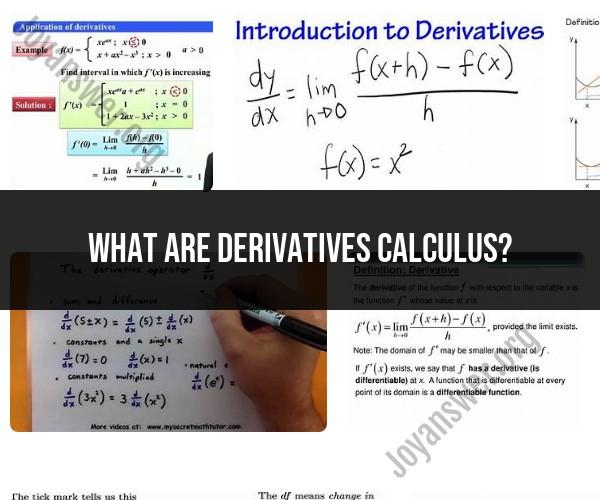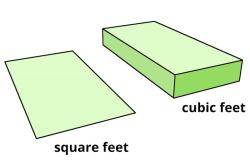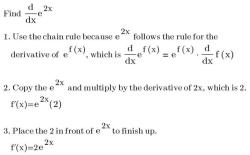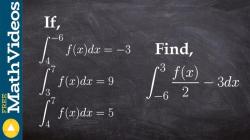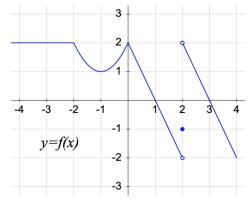What are derivatives calculus?
In calculus, derivatives are fundamental mathematical concepts used to describe how a function changes at a particular point. A derivative provides information about the rate at which a function's value is changing concerning the independent variable. It allows you to analyze the slope of the function's graph at a specific point, which can be crucial in various scientific, engineering, and mathematical applications.
Here are the key components and concepts related to derivatives in calculus:
Derivative Notation: Derivatives are typically denoted in several ways, including:
- : The derivative of the function with respect to the variable .
- : The derivative of the function with respect to .
Rate of Change: The derivative represents the rate at which a function is changing at a given point. In other words, it tells you how the function's output (dependent variable) changes concerning the input (independent variable).
Instantaneous Rate of Change: The derivative at a specific point gives the exact rate of change of the function at that point. It represents the slope of the tangent line to the curve at that point.
Derivative Rules: There are several rules and techniques for finding derivatives, including:
- Power Rule: , where is a constant.
- Sum/Difference Rule: .
- Product Rule: .
- Quotient Rule: .
Applications: Derivatives have many practical applications, including:
- Calculating velocity and acceleration from position functions.
- Analyzing the behavior of functions in optimization problems.
- Understanding the slopes of curves in physics, engineering, and economics.
- Studying rates of chemical reactions in chemistry.
Higher-Order Derivatives: Derivatives can be taken repeatedly to describe higher-order rates of change. The second derivative () represents the rate of change of the rate of change and is often used to analyze concavity and inflection points.
Notation for Higher-Order Derivatives: Higher-order derivatives are denoted using exponents. For example, the third derivative of is denoted as , and so on.
Derivatives of Trigonometric and Exponential Functions: Calculus involves finding derivatives of various functions, including trigonometric functions (e.g., sine, cosine) and exponential functions (e.g., ).
Derivatives are a fundamental tool in calculus and are essential for understanding how functions change and interact with one another. They are used to solve a wide range of mathematical and real-world problems, making them a cornerstone of calculus and mathematical modeling.
Demystifying Derivatives in Calculus
Derivatives are one of the most important concepts in calculus. They are used to measure the rate of change of a function, and they have many applications in science, engineering, and economics.
The derivative of a function at a point is defined as the slope of the tangent line to the graph of the function at that point. The slope of the tangent line represents the rate of change of the function at that point.
The Power of Derivatives in Analyzing Functions
Derivatives can be used to analyze functions in a variety of ways. For example, derivatives can be used to:
- Find the maximum and minimum values of a function
- Determine the intervals where a function is increasing or decreasing
- Identify the inflection points of a function
- Solve optimization problems
Calculus Fundamentals: Understanding Derivatives and Their Applications
To understand derivatives, it is important to have a basic understanding of calculus. Calculus is the study of change, and it includes two main branches: differential calculus and integral calculus. Differential calculus is the study of rates of change, and integral calculus is the study of accumulation.
Derivatives are a fundamental part of differential calculus. They are used to measure the rate of change of a function at a point.
Applications of Derivatives
Derivatives have many applications in the real world. Here are a few examples:
- Science: Derivatives are used in physics to study motion, and in chemistry to study reaction rates.
- Engineering: Derivatives are used in engineering to design bridges, buildings, and other structures.
- Economics: Derivatives are used in economics to study supply and demand, and to predict market trends.
Conclusion
Derivatives are a powerful tool that can be used to analyze functions in a variety of ways. They have many applications in science, engineering, and economics.
If you are interested in learning more about derivatives, there are many resources available online and in libraries.
